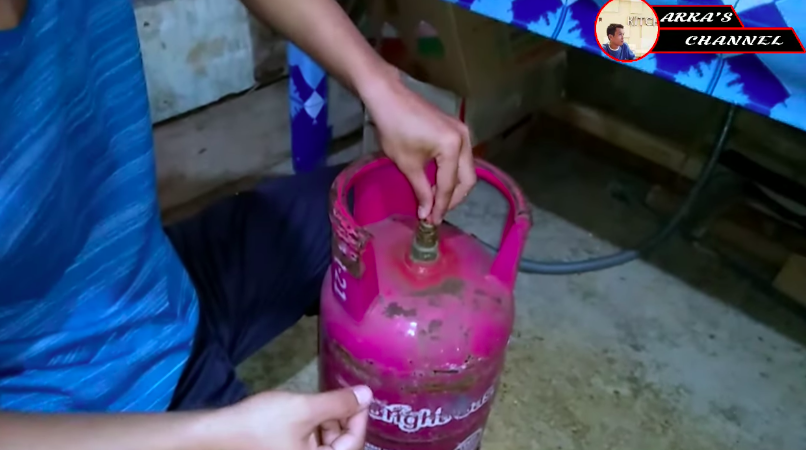foto: YouTube/ARKA’S CHANNEL
Brilio.net - There are many people who admit they are afraid when they have to deal with LPG gas cylinders (LPG). The reason is, gas cylinders can leak, especially when a regulator is installed. Usually a leaking gas cylinder is indicated by a hissing sound. This was also felt by YouTube user ARKA'S CHANNEL.
In the video upload, this netizen admitted that he was experiencing problems when replacing his gas cylinder which had run out. After the regulator hose was attached to the new gas cylinder, a hissing sound came out. Not only that, the smell of gas spread throughout the kitchen.
Knowing this, a number of people usually immediately block the mouth of the gas cylinder with a rubber band. To do this, just wrap the rubber band several times around the mouth of the gas cylinder and then install the regulator as usual. Unfortunately, this method is considered ineffective considering the texture of the rubber band is flexible and breaks easily. This was conveyed by the owner of the YouTube video ARKA'S CHANNEL.
This is wrong, because the hook will have less grip because of the rubber band. "This method is not recommended," he said, explaining the reasons why you shouldn't use rubber bands, as quoted by BrilioFood from YouTube ARKA'S CHANNEL on Sunday (26/5).

photo: YouTube/ARKA'S CHANNEL
How to deal with hissing LPG gas cylinders.
As a solution, this netizen relies on a simple tool, namely a rubber gas cylinder seal. In his upload, this netizen admitted that he needed two rubber seals. However, the first rubber seal just relies on the gas cylinder.
"We'll take the other one using the cutter tip like this," said the video owner.

photo: YouTube/ARKA'S CHANNEL
Once removed, place two rubber seals on a cutting board. Then cut them both into two equal parts. Just take a thicker piece of rubber seal, OK?

photo: YouTube/ARKA'S CHANNEL
If so, insert the first piece of rubber seal into the mouth of the gas cylinder. After pressing it gently, then place the thicker piece of rubber seal in the middle.
"So we stack two thick parts in it, then we try," he explained.

photo: YouTube/ARKA'S CHANNEL
After that, install the regulator as usual. As a result, there is no more hissing sound which indicates that the gas cylinder is not leaking. This allows the stove to be lit safely.

photo: YouTube/ARKA'S CHANNEL
How to clean dirty LPG gas cylinders.
Cleaning dirty LPG gas cylinders requires special attention to ensure safety. The following are the steps that can be followed to clean LPG gas cylinders safely:
Required tools and materials:
1. Rubber gloves: To protect hands from dirt and chemicals.
2. Cloth or sponge: To clean the surface of the tube.
3. Liquid soap or detergent: To clean oil stains and dirt.
4. Warm water: To help dissolve dirt.
5. Old toothbrush: To clean hard-to-reach areas.
6. Dry wipe: To dry the tube after cleaning.
Cleaning steps.
1. Ensure security.
- Before cleaning, make sure the gas cylinder is turned off and there are no leaks. Also make sure the tube is in an open, well-ventilated area.
- Wear rubber gloves to protect your hands.
2. Remove the regulator.
- If the gas cylinder is still connected to the stove or other device, remove the regulator and make sure no gas comes out.
3. Clean the tube surface.
- Mix warm water with liquid soap or detergent in a bucket.
- Dip a rag or sponge into the mixture and squeeze until damp.
- Wipe the surface of the gas cylinder with a damp cloth or sponge to remove dust, oil and dirt.
4. Clean hard-to-reach areas.
- Use an old toothbrush dipped in the soap mixture to clean hard-to-reach areas, such as around the valve or the bottom of the tube.
5. Rinse and dry.
- Rinse the tube with a cloth dampened with clean water to remove soap residue.
- Dry the gas cylinder with a dry cloth to prevent rust or corrosion.
By following these steps, your LPG gas cylinder will remain clean and safe to use.
(brl/tin)